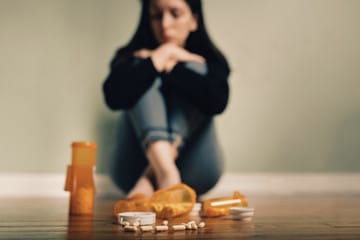Opioids have been a problem in America for a long time, but has been gravely exacerbated by the COVID-19 Pandemic that has shaken the world. Addicts are even more inclined to abuse opioids to escape the harsh reality of 2020, but the strain on the economy and danger of infection when going outside to re-up makes it more dangerous.
The result is an observed increase in drug abuse, overdoses, relapses, and an unimaginable effect on unreported withdrawal symptoms and the effect that has had on domestic relationships. Unable to go out and see their support groups, former addicts have become even more vulnerable to relapsing, and those who have been in the process of quitting and going through traditional means of getting treated for withdrawal are no longer able to do so.
The most effective form of withdrawal treatment is “medication-assisted treatment”, the most popular drug for this purpose being buprenorphine. Prior to the pandemic, as many as forty-percent of Americans lived in areas where they did not have access to treatment providers with buprenorphine. The effects of the pandemic made it difficult for those who did have access to such providers to get treatment, not to mention those who didn’t in the first place.
The bright side is that effective new ways of reaching those who need medication-assisted treatment are being utilized. Telemedicine is a method of remote diagnosis and counselling between doctor/nurse and patient and has been around as long as the late 1950s but has become increasingly important as our Internet and streaming technology has improved.
Prior to the pandemic, federal law required patients to initially have an in-person evaluation with an Opioid Treatment Program prior to receiving medication-assisted treatment. However, with the severity of the pandemic, a federal exemption was created that made program physicians, primary care physicians, or authorized healthcare professionals under the supervision of a program physician able to prescribe buprenorphine and Suboxone (a combination of buprenorphine and naloxone) provided they determine that the virtual evaluation is adequate.
Company’s providing this kind of care have found that patients do better when they are able to have check-ups from home, avoiding the stigma of visiting an addiction clinic. This has also led to an increase in prescription –refills for recovering addicts. This form of treatment is still very much in its early days though, as many addicts don’t have homes, much less the finances to afford the cost of appointments, prescriptions, Internet for the calls/online conferences, or the cost of owning a phone and/or computer.
Progress will have to be made in programs such as Medicaid, to make this kind of treatment more affordable for those who are truly in danger of being overcome by the effects of drug addiction during a pandemic. There are volunteer groups that make moving medical treatment centres such as busses or vans, but they are not the answer to the countries epidemic in the pandemic.

Isreal olabanji a dental assistant and public health professionals and has years of experience in assisting the dentist with all sorts of dental issues.
We regularly post timely and trustworthy medical information and news on Fitness, Dental care, Recipes, Child health, obstetrics, and more.
The content is intended to augment, not replace, information provided by your clinician. It is not intended nor implied to be a substitute for professional medical advice. Reading this information does not create or replace a doctor-patient relationship or consultation. If required, please contact your doctor or other health care provider to assist you to interpret any of this information, or in applying the information to your individual needs.


